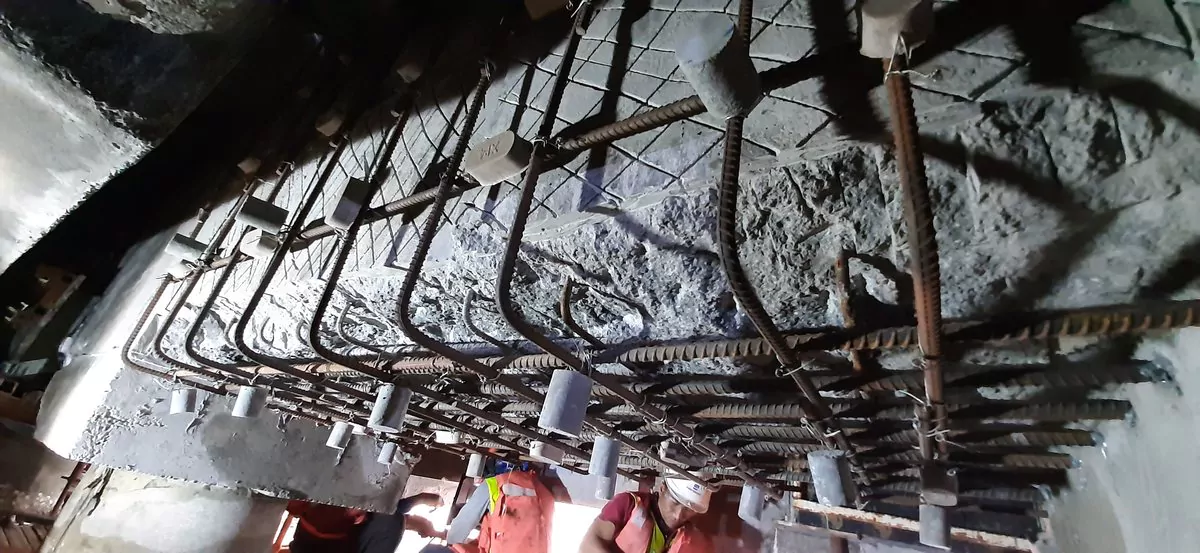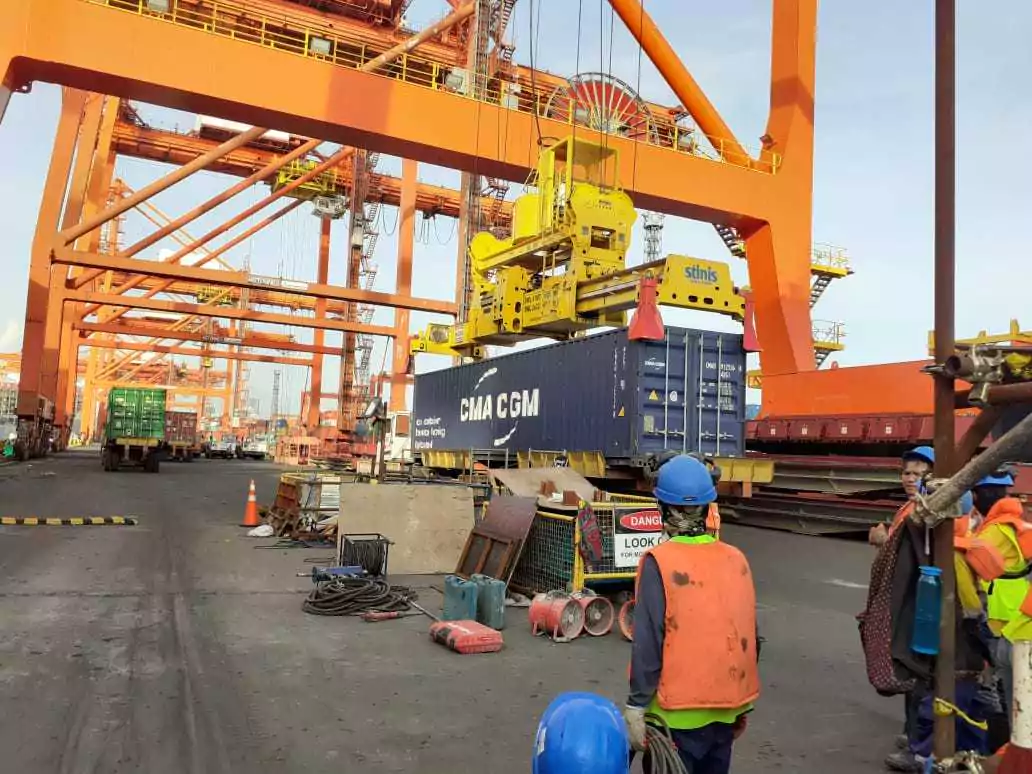
Alternative option
The initial bid was based on a traditional encapsulation method for repairing the concrete beams, but the need to prevent vibration of the structure during concrete pours would have impacted directly on port operations. Freyssinet’s proposal to use shotcrete instead of encapsulation was ultimately accepted.
Freyssinet was responsible for the concrete repairs under the wharf, replacing external post-tensioning tendon protection and installing a cathodic protection system, leading a consortium with Australian contractor Prime BMD which carried out specialist operations including underwater and sheet-pile repairs and replacement of mooring equipment.
